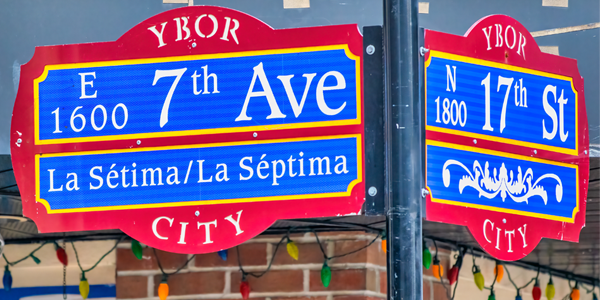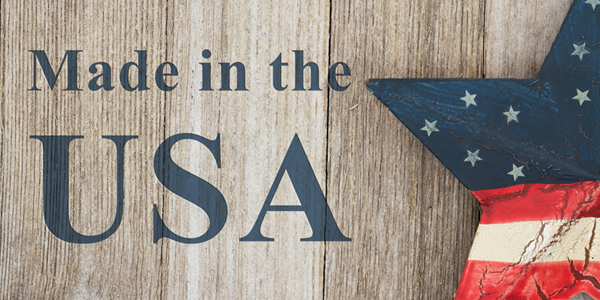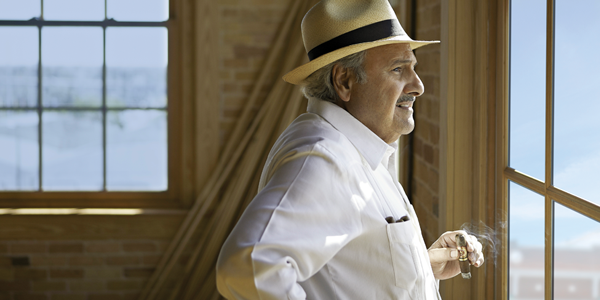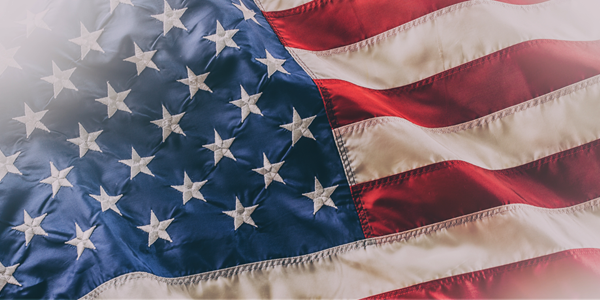Ybor City Cigars
As memory of precise dates fades, I grow fonder of the phrase “back in the day.” In this case of cigars being made in the United States, back in the day is 1869. That’s when a Spanish immigrant, who learned the cigar business in Cuba and opened a factory in Havana, had to flee Cuba because of his sentiments against Spain’s colonial occupation of the island, siding with Cuban revolutionaries in the Ten Years’ War. An arrest warrant was issued by the Spanish authorities for Vicente Martinez Ybor. In what, sadly, has become a familiar dynamic over the years, the cigar-maker escaped with his family, making it to Key West on a ship. Martinez Ybor opened a small cigar factory in Key West, but eventually moved north to open a larger factory, at the time just outside the city limits of Tampa. That is how Ybor City came to be.
The First Bricks of Ybor City
Martinez Ybor was intent on restarting his cigar business. He, along with partners, purchased land in Tampa and began building a massive brick factory, operating out of wood shanties until the structure was finished in the summer of 1886. Martinez Ybor relaunched the Principe de Gales (Prince of Wales) cigar. This was Martinez Ybor’s brand in Havana, one he had begun making in 1856. The art included a portrait of the actual prince and was subtitled, “King of Fine Cigars.” It was one of the most popular in the world at the time. You know, back in the day.
Ybor City’s Cuban Cigars
Martinez Ybor imported Cuban workers to make his cigars, many of whom were put out of work by a massive fire in Key West that destroyed cigar factories there. He also brought in Cuban tobacco. Doing so, he could make Cuban cigars in the US, but avoid paying the tariffs to import finished Cuban puros. This made Martinez Ybor’s cigars a very popular brand as it could be sold for less. The factory reportedly made tens of thousands of cigars each day. The success of Martinez Ybor’s cigar factory led to other factories locating in what had become dubbed Ybor City. So successful was the cigar business that the city of Tampa annexed Ybor City in 1887.
Martinez Ybor’s cigar factory, thought to be the world’s largest at the time, kept going even after the founder’s death in 1896. But the factory could not withstand the decline of the cigar business in the 1940s and closed. Today, the old building is owned by the Church of Scientology, but you can take a tour and see where the rolling floors were.
Ybor City Cigar History
The beginnings of the cigar industry in the US are commonly understood to have started in Ybor City, called the “cigar capital of the world.” In the 1890s, the industry thrived as a commercial business, attracting immigrants from Spain, Cuba, Italy, and elsewhere to its cigar factories. By 1920, the area became formally known as Ybor City. Among the companies making cigars in Ybor City was A. Fuente and Co., which began in 1912 and adopted the practice of importing Cuban tobacco to make cigars rolled in the US. The US headquarters of the Fuente company is still in Tampa. At its peak, Ybor City is thought to have produced around 500 million cigars a year.
Ybor City Declines
Bad economic times hit the world with the Great Depression of the 1930s. Ybor City was not spared. The financial distress reduced the demand for cigars and many Ybor City factories closed. Some stayed open but made cigars only by machine. The talented torcedores (rollers) disappeared.
Embargo
Whatever premium, handmade cigar business was left in Ybor City after the depression came under near fatal attack in 1962 when the US imposed a trade embargo on Cuba. No longer could the Ybor City cigar industry import Cuban leaf. Other sources had to be discovered. In the end, the reaction to the embargo by cigar makers in Ybor City and elsewhere led to the creation of new cigar centers in different countries, mainly the Dominican Republic, Honduras, and Nicaragua. New tobacco-growing lands were found there and in other countries that had soil similar to that of Cuba’s principal tobacco regions. The US moved from being a cigar-producing market to become the largest cigar-consuming market in the world.
Ybor City Cigars
In 1895, the entire US was thought to have somewhere near 42,000 cigar factories. Today, there are likely fewer than 50 cigar factories in America. Florida has most of them, among them J.C. Newman, which calls itself “America’s Oldest Family-Owned Cigar Manufacturer.” It still operates in Ybor City and tours are available. The factory, known as El Reloj (the clock; a big clock is atop the tower of the factory), was founded in 1895 and resides in the Ybor City National Historic Landmark District, along the historic 7th Avenue which remains the main street of Ybor City. There, cigars are rolled both by hand and by machine. Among the cigars still made there is The American, which the company says is 100 percent American-made. The wrapper is Florida Sun Grown tobacco, the binder is Connecticut Broadleaf, and the filler is a blend of Pennsylvania and Connecticut leaves.
A walk down the historic 7th Avenue will take you to smaller operations like La Faraona Cigars, boasting cigars rolled from Cuban-seed tobacco and “the biggest cigar lounge in Ybor City.” Tabanero Cigars, also on 7th Avenue, uses Ecuadoran Sun Grown or Nicaraguan Shade Grown wrappers on its Robusto, with a blend of Nicaraguan and Ecuadoran fillers. Several cigar stores and lounges dot the main street and it’s about as cigar-friendly a place as you’ll find anywhere. And you can get a pretty decent Cuban sandwich too.
If you’re looking for a place where you can buy Cuban cigars in Ybor City, save your time. It’s still illegal to buy and sell Cuban cigars in the States.
The Fuente Legacy in Ybor City
The Fuente family, whose four generations have called Ybor City home for a century, are pillars of the community and a strong reflection of its vibrant cigar heritage. Arturo Fuente founded A. Fuente & Company in 1912 after immigrating from Cuba. He worked at the E.H. Gato Cigar Factory in Key West before migrating north to Tampa. Today, the Charles the Great Cigar Factory, located at 1310 N. 22nd Street, is home to the Fuente family’s headquarters. Carlos Fuente, Arturo’s son, purchased the property in 1965 to accommodate the family’s growing business, and his son, Carlito Fuente, oversaw the building’s extensive four-year restoration, which began in 2010. The building is a window into Ybor City’s past and a celebration of the American dream.
In Ybor City, Arturo Fuente experienced great success and suffered grave setbacks, losing all he worked for when a tragic fire consumed his first, and very successful, cigar factory in 1924. At 58 years old, in 1946, Arturo Fuente began making his own cigars on the modest 10 x 15 back porch of his home in Ybor City, where friends and family constituted his work force. The Fuentes sold small quantities of cigars out of the house for cash. Arturo never intended to make a lot of cigars but insisted on making the best. The experience was of immense significance to Arturo’s son, Carlos, who would grow the Fuente brand – with his son, Carlito Fuente – into a renowned powerhouse and one of the largest premium cigar companies in the world.
Though the Dominican Republic is home to the Fuentes’ primary cigar factory and their world-famous Chateau de la Fuente estates, the family has never strayed from its humble Ybor City roots. In addition to maintaining their corporate headquarters in Ybor City, the Fuentes opened the impressive Grand Cathedral of Cigars in 2021, a church renovated into a sprawling retail cigar shop and lounge. In honor of Carlos Fuente, Tampa mayor Bob Buckhorn renamed a stretch of Second Avenue as Carlos Fuente’s Way in 2016. Carlos, nearly brought to tears by the gesture, expressed monumental love for Ybor City and America until his passing at the age of 81. Today, Carlito Fuente, his sister, Cynthia, and their children contribute much to the Ybor City community as dedicated stewards of their family legacy.







